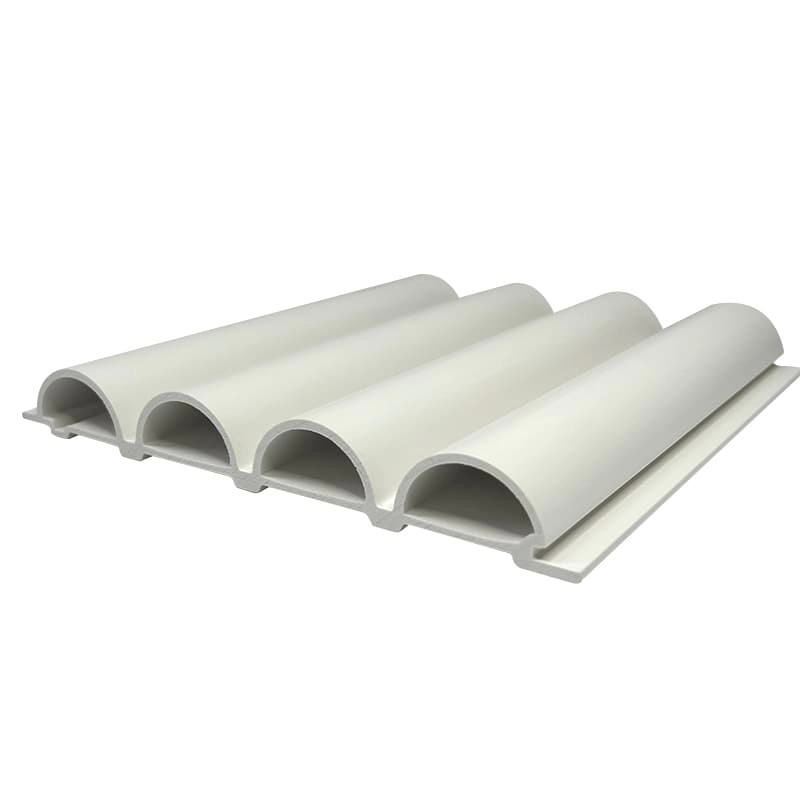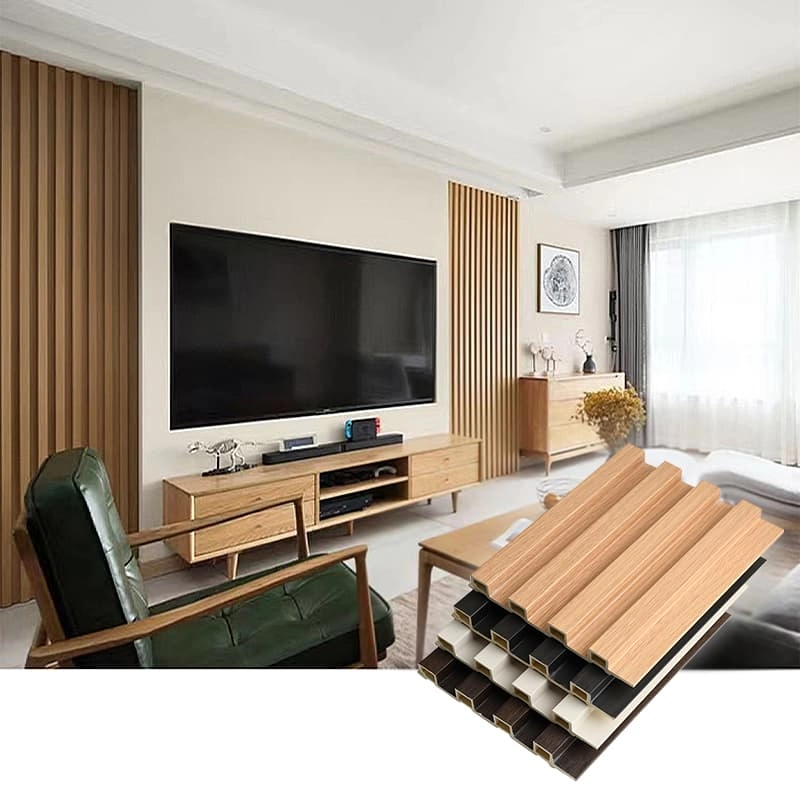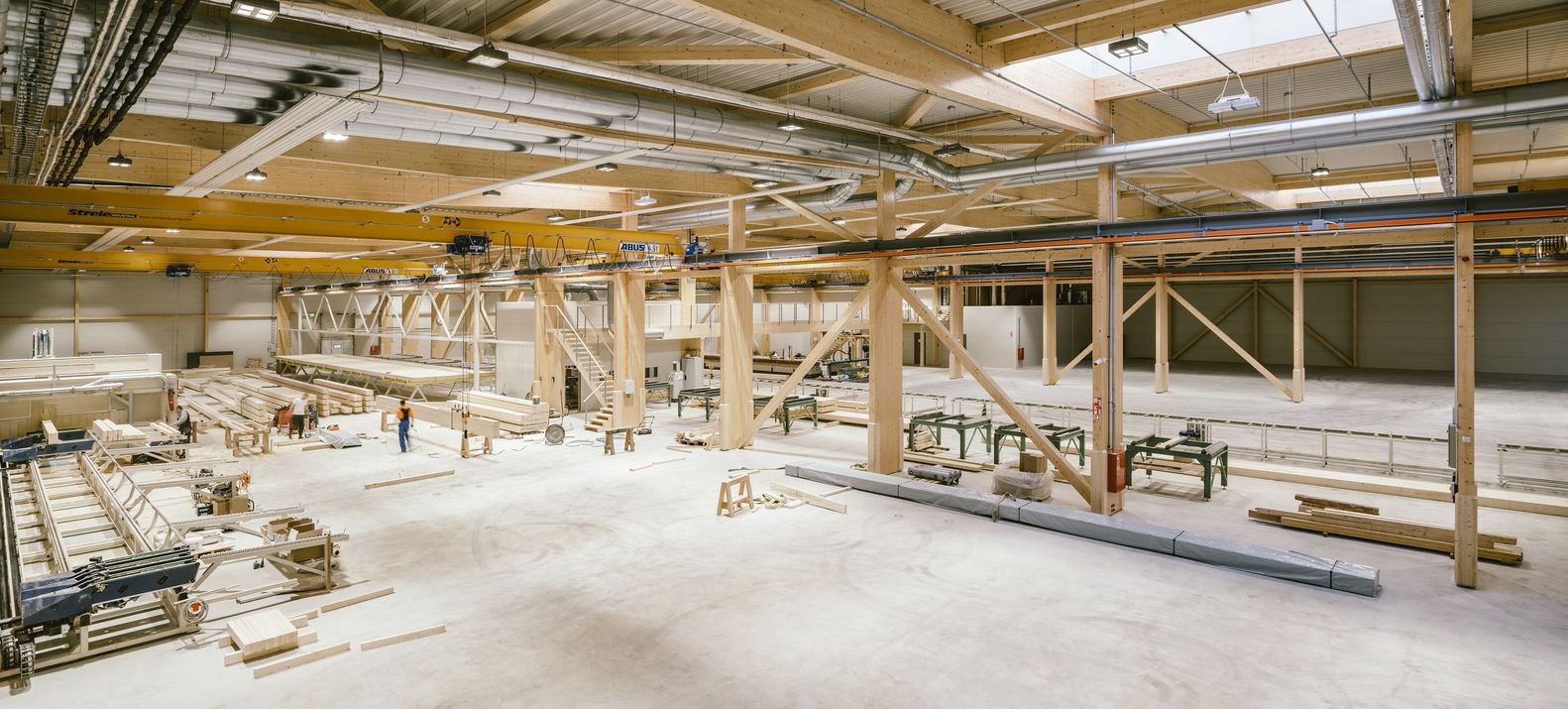CATEGORIES
WPC Board Revolution: Unpacking the Advantages and Disadvantages of Wood Plastic Composite Cladding
Wood Plastic Composite, or WPC, is making big waves in the building world. You've probably heard about WPC board and WPC cladding, but what's the real story? This material mixes wood fibers with plastic, promising the best of both worlds. As Allen, with years of experience running a WPC factory in China and exporting to demanding markets like the USA and Europe, I've seen firsthand how WPC is changing the game. This article will dive deep into the advantages and disadvantages of WPC boards. We'll explore why it's a hit with folks like Mark Wilson, a US-based company owner who needs top quality at good prices. If you're looking to understand if WPC is right for your next project, or if you're a buyer wanting to make informed decisions, this is for you. We'll cover everything from durability to eco-friendly aspects, helping you see the full picture of advantages and disadvantages of WPC.
What Exactly is WPC and How is this Composite Board Made?
So, what is this WPC stuff everyone's talking about? WPC stands for Wood Plastic Composite. Think of it as a hybrid material. It’s made by blending wood fibers or flour (like sawdust or finely ground wood particles) with thermoplastics. These thermoplastics can include polyethylene (PE), polypropylene (PP), or even polyvinyl chloride (PVC). Sometimes, we also use polylactic acid (PLA). The exact recipe can change, but the goal is always to create a material that combines the best qualities of wood and plastic.
The manufacturing process for a WPC board is quite fascinating. First, the wood fibers and plastic are thoroughly mixed. Often, an additive or coupling agent is included to help the wood and plastic bond better. This mixture is then heated and typically extruded into the desired shape – like planks for a deck, sheets for paneling, or custom profiles for window and door frames. It can also be injection molded. The result is a dense, consistent composite board that often aims to mimic the appearance of wood but with enhanced properties. As a factory owner, I can tell you that precise control over this process is key to producing high-quality WPC products.
This technology allows us to create WPC boards that are incredibly versatile. They can be engineered for specific performance characteristics, like increased strength and durability or enhanced fire resistance. The consistency of WPC also means less waste compared to processing natural wood, where knots and imperfections can be an issue. The development of WPC has been a significant step forward in building materials, offering a compelling alternative to traditional wood for many applications.
Why are WPC Boards Gaining Such Popularity in Modern Construction and Deck Projects?
You might be wondering, why the sudden buzz around WPC boards in the construction industry? Well, it’s not so sudden if you’ve been watching the trends in building materials. One of the main reasons for the growing popularity of WPC is its impressive blend of performance and aesthetic appeal. Think about a beautiful new deck or stylish wall cladding; WPC boards offer the natural look of wood without many of its inherent problems. This makes them a hit for both commercial and residential projects.
Another huge factor is the increasing focus on sustainability in the construction sector. WPC often utilizes recyclable materials, including reclaimed wood fibers and recycled plastics. This helps reduce the demand for virgin timber, which in turn can lessen deforestation. For environmentally conscious builders and clients, this eco-friendly aspect is a major advantage. As a supplier, we've seen demand soar from clients who prioritize green building solutions.
Finally, the sheer versatility and adaptability of WPC make it a go-to choice. It can be used in a wide range of applications, from outdoor deck projects, fencing, and landscaping to indoor uses like paneling, flooring, and even furniture. The material's resistance to moisture, pests, and decay means it performs well in various weather conditions and environments where traditional wood might struggle. This reliability is something procurement officers like Mark Wilson really value, as it translates to fewer complaints and longer-lasting installations. The advantages of WPC are truly compelling in today's market.
What are the Key Advantages of Using WPC Board Solutions?
When we talk about the advantages of WPC, there's a whole list of benefits that make it an attractive option. From my experience manufacturing WPC board products, these are the highlights that consistently impress our customers, especially those in the B2B space who need reliable building materials.
Here's a breakdown of the key benefits:
- Exceptional Durability: WPC boards are built to last. They are highly resistant to common issues that plague natural wood, such as rot, decay, and termite attacks. This durability means a longer lifespan for your projects, whether it's a deck or wall cladding.
- Low Maintenance: This is a big one! Unlike traditional wood, WPC doesn't require regular painting or staining to maintain its appearance and integrity. A simple wash is usually all that's needed for upkeep, saving time and money in the long run. This low-maintenance quality is a huge selling point.
- Water Resistance: WPC materials have excellent resistance to moisture. They don't absorb water like wood does, which prevents them from swelling, warping, or cracking. This makes WPC ideal for humid environments, bathrooms, kitchen areas, and outdoor spaces.
- Eco-Friendly Option: Many WPC boards are made from recyclable materials, including wood waste and recycled plastics. This contributes to sustainability by reducing reliance on virgin resources and minimizing deforestation. It's a greener choice for modern construction.
- Aesthetic Versatility: WPC can be manufactured in a wide range of colors, finishes, and textures. It can effectively mimic the look of various wood species or offer contemporary solid colors. This design flexibility allows architects and designers to achieve their desired aesthetics. You can explore various options like our XHI01 Colorful Ps Wall Panel Material For Interior Decoration which, while PS, showcases the kind of color versatility achievable with composite materials.
- Easy Installation: WPC boards are generally lighter than solid wood and can be worked with using standard woodworking tools. Many systems come with wpc installation friendly designs, like interlocking profiles, which can speed up construction time.
- Consistent Quality: Because WPC is a manufactured product, it offers greater consistency in terms of size, density, and color compared to natural wood. This predictability is a significant advantage for large-scale projects.
These benefits collectively make WPC board a strong contender in the construction and design world, offering a practical and appealing alternative to traditional wood.
Are WPC Boards Truly Eco-Friendly? A Closer Look at Sustainability.
This is a question I get a lot, especially from clients like Mark Wilson who are keen on sourcing responsible building materials. The short answer is: WPC boards can be a very eco-friendly choice, but it depends on how they're made and what they're made from. The fact that WPC often incorporates recycled content is a huge plus for sustainability. We're talking about wood waste (like sawdust from mills that would otherwise go to landfill) and recycled plastics (like bottles or packaging). This use of recyclable materials helps conserve natural resources and reduces the amount of waste ending up in our environment.
Furthermore, the durability and longevity of WPC also contribute to its green credentials. Because WPC boards last longer and require less frequent replacement than some traditional wood options, especially in harsh conditions, this means less material consumption over time. Reducing the cycle of replacement lessens the environmental impact associated with manufacturing, transporting, and disposing of materials. This long-term performance is a key aspect of its eco-friendly profile.
However, it's not all black and white. The "plastic" part of Wood Plastic Composite means it's not fully biodegradable like pure wood. The thermoplastics used, such as PE, PP, or PVC, will persist in the environment if not properly managed at the end of their life. Responsible manufacturers are increasingly looking into recycling programs for WPC products. Also, the energy consumed during the manufacturing process is a factor to consider. As a supplier, we are always striving to optimize our processes to be more energy-efficient and to maximize the recycled content in our WPC board offerings, making them a more sustainable choice in the construction industry.
How Does WPC Compare to Traditional Wood in Terms of Durability and Maintenance?
This is a classic showdown: WPC versus traditional wood. When it comes to durability and maintenance, WPC boards generally have a significant advantage. Natural wood, for all its beauty, is susceptible to a range of issues. It can absorb moisture, leading to swelling, warping, cracking, and rot, especially in damp or humid conditions. It's also a tasty meal for termites and other pests. This means traditional wood often requires a lot of upkeep – regular sealing, painting or staining, and inspections to keep it in good shape.
Now, let's look at WPC. These wood-plastic composites are specifically engineered to combat these problems. Their plastic component makes them highly resistant to moisture, so they don't warp or decay easily. This resistance to moisture is a game-changer for outdoor applications like decks and cladding, or indoor areas like bathrooms. WPC materials are also inherently resistant to termites and other wood-boring insects, which can save homeowners a lot of headaches and money.
The difference in maintenance is stark. While traditional wood might need re-staining every few years, a WPC board typically just needs occasional cleaning with soap and water to maintain its aesthetic appeal. This low-maintenance nature not only saves on effort and cost but also reduces the use of potentially harmful chemicals found in some wood treatments. So, compared to traditional wood, WPC boards offer a more hassle-free and often longer-lasting solution, which is a major plus for both end-users and the construction professionals who install them.

What Are the Common Applications for WPC Boards and Cladding in Homes and Businesses?
The versatility of WPC boards is one of their strongest suits. You'll find them being used in an ever-expanding range of applications, both for interior design and exterior projects. As a manufacturer, we produce WPC profiles for all sorts of uses, and it's exciting to see the innovative ways designers and builders are using WPC board solutions.
Here are some of the most common applications:
- Decking: This is perhaps the most well-known use for WPC. WPC deck boards are popular for their durability, slip resistance, and low-maintenance qualities, making them perfect for outdoor spaces.
- Wall Cladding & Paneling: WPC wall cladding is increasingly used to enhance the exteriors of buildings, offering a modern and weather-resistant finish. Indoors, WPC paneling can create stunning feature walls or add texture to rooms. Our range of decorative WPC wall panels demonstrates the aesthetic possibilities.
- Fencing & Railing: WPC is an excellent material for fences and railings due to its strength, weather resistance, and ability to hold color without fading quickly under UV rays.
- Window and Door Frames: The stability and moisture resistance of WPC make it suitable for window and door frames, offering an alternative to wood or aluminum.
- Indoor Flooring: While less common than outdoor decking, some WPC formulations are used for indoor flooring, especially in areas prone to humidity like basements or bathrooms.
- Furniture: Outdoor furniture made from WPC is becoming popular because it can withstand the elements. Indoors, it's used for items like cabinet doors in kitchens and bathrooms or even for modular furniture components.
- Modular Kitchens & Wardrobes: The moisture resistance and termite resistance of WPC board make it a great choice for building kitchen cabinets, bathroom vanities, and wardrobe structures, especially in tropical climates.
- Signage and Landscaping Elements: Its durability makes WPC suitable for outdoor signs, garden edging, and other landscaping features.
The list goes on! The adaptability of WPC means new applications are constantly being explored, making it a truly dynamic material in the construction and design landscape.
Are There Any Disadvantages or Limitations to Using WPC Boards I Should Know About?
While WPC boards have many advantages, it's important to be aware of potential drawbacks or limitations. No material is perfect for every situation, and understanding the disadvantages of WPC boards helps in making an informed choice. From my perspective as a factory owner who values transparency with clients like Mark Wilson, here are some points to consider:
- Initial Cost: WPC boards can sometimes be pricier upfront compared to traditional wood or other common building materials. However, it's crucial to factor in the long-term savings from reduced maintenance and longer lifespan. The total cost of ownership for WPC can often be lower.
- Appearance: While WPC can effectively mimic the appearance of wood, some purists might find that it doesn't have the exact same feel or grain variability as natural wood. High-quality WPC products are getting much better at replicating the natural look, though.
- Performance in High Temperatures: Some types of WPC can be susceptible to expansion and contraction with significant temperature fluctuations. In very high temperatures or direct, intense sunlight, darker colored WPC boards might become quite hot to the touch. It's important to choose a quality WPC designed for your specific climate.
- Not Fully Biodegradable: As mentioned earlier, the plastic component in WPC means it isn't biodegradable in the same way as pure wood. While recycling options are improving, end-of-life disposal needs consideration for true sustainability.
- Weight: Some WPC boards can be heavier than comparable wood products, which might affect transportation costs and require more robust supporting structures for certain applications like elevated decks.
- Scratching and Staining: While generally durable, some WPC surfaces can be susceptible to scratching from sharp objects. Certain types of stains (like grease or red wine on a deck) might also require specific cleaning methods if not addressed promptly.
- Thermal Expansion: All building materials expand and contract with temperature changes, and WPC is no exception. Proper installation techniques must account for this to prevent warping or buckling.
Understanding these potential disadvantages of WPC boards allows for better planning and material selection, ensuring the chosen WPC product meets the project's specific needs and environmental conditions.
What Should Buyers Like Mark Wilson Consider Regarding WPC Installation and Upkeep?
For buyers like Mark Wilson, who are procurement officers and company owners, understanding the practical aspects of WPC installation and upkeep is key to ensuring project success and customer satisfaction. While WPC boards offer many conveniences, a few considerations can make a big difference.
Regarding WPC installation:
- Follow Manufacturer Guidelines: This is paramount. Each WPC product might have specific installation requirements, especially concerning spacing for thermal expansion, fastener types, and support structure. Ignoring these can lead to problems down the line.
- Proper Ventilation: For applications like decking and cladding, ensuring adequate airflow beneath or behind the WPC boards is crucial. This helps prevent moisture buildup and maintain the material's longevity.
- Use Correct Tools: While WPC can generally be worked with standard woodworking tools, using sharp, carbide-tipped blades is often recommended for cleaner cuts and to prolong tool life.
- Thermal Expansion Gaps: As mentioned, WPC expands and contracts. Proper installation involves leaving appropriate gaps between boards and at abutments to accommodate this movement.

As for upkeep, WPC is famously low-maintenance, but "low" doesn't mean "no":
- Regular Cleaning: Periodic cleaning with mild soap and water is usually sufficient to remove dirt and debris and keep the WPC boards looking their best. Avoid abrasive cleaners or tools that could scratch the surface.
- Addressing Spills Promptly: For spills like grease, wine, or berries on a WPC deck, it's best to clean them up quickly to prevent potential staining, especially on lighter colored or uncapped WPC.
- Inspections: While WPC is resistant to rot and termites, it’s still a good idea to periodically inspect the installation, particularly fasteners and support structures, to ensure everything remains secure.
By communicating these points to their clients (construction firms, interior designers), buyers like Mark can help ensure that the WPC products they supplier perform optimally and that end-users are happy with their investment. Clear guidance on using WPC board correctly is always beneficial.
How Can You Ensure You're Sourcing High-Quality WPC Materials from a Reliable Supplier?
This is a critical question for anyone in the B2B space, especially for someone like Mark Wilson whose business relies on the quality of imported building materials. Sourcing high-quality WPC materials starts with finding a trustworthy supplier. As a factory owner myself, I know what sets reputable manufacturers apart.
Here’s what to look for:
- Certifications and Testing: Ask for relevant certifications. This could include fire safety ratings (e.g., ASTM E84 for wall cladding), environmental certifications (like those verifying recycled content or low VOC emissions), and quality management system certifications (e.g., ISO 9001). Be wary of suppliers who are hesitant to provide these or whose certificates seem dubious. Reliable suppliers like us, Xihongbm, are transparent about our certifications.
- Product Specifications and Samples: Request detailed product specifications for the WPC board you're interested in. This should include information on the composition (types of wood fibers or flour and thermoplastics used), density, strength ratings, UV resistance, and warranty. Always get samples to assess the finish, color consistency, and overall build quality.
- Factory Audits/Visits: If possible, visit the factory or arrange for a third-party audit. This allows you to see the manufacturing process, quality control measures, and working conditions firsthand. This is something we welcome at our 7 production lines.
- Track Record and References: Look for a supplier with a proven track record. Ask for references from other clients, particularly those in your market (e.g., USA, Europe). Positive testimonials and long-term relationships speak volumes.
- Communication and Transparency: A good supplier will communicate clearly and promptly. They should be knowledgeable about their WPC products and willing to answer technical questions. Transparency about their sourcing of raw materials and production processes is also a good sign.
- Quality Inspection Processes: Inquire about their internal quality control. Additionally, consider arranging pre-shipment inspections by an independent third party for large orders to verify that the WPC board meets your standards before it leaves the factory.
- Understanding of Your Market's Standards: A supplier experienced in exporting to your region (e.g., North America, Australia) will be more familiar with the specific standards, building codes, and expectations for WPC materials in that market.
By taking these steps, buyers can significantly reduce the risks associated with sourcing WPC and ensure they receive high-quality products that meet the demands of their customers. It's about building a partnership with a supplier who values quality as much as you do.
WPC Boards: The Future of Sustainable Building Materials or Just a Trend?
Looking ahead, I firmly believe that WPC boards are more than just a passing trend; they represent a significant part of the future of sustainable building materials. The drivers behind their popularity – durability, low-maintenance, aesthetic appeal, and eco-friendly attributes – align perfectly with the evolving needs of the construction industry and consumer preferences. The ongoing innovation in WPC technology is also very promising.
The push for greener construction practices is only going to intensify. WPC materials, with their ability to utilize recyclable materials and reduce reliance on deforestation-heavy natural wood, are well-positioned to meet this demand. As manufacturers, we are constantly researching ways to make WPC even more sustainable, perhaps by increasing the percentage of recycled content, exploring more biodegradable polymer options, or reducing the energy footprint of the manufacturing process. For instance, exploring options like our bamboo and wood fiber wall panels shows a commitment to diverse, sustainable fiber sources.
Moreover, the versatility and adaptability of WPC board mean it can cater to a vast range of applications, from residential decking and cladding to large-scale commercial projects. Its performance benefits, such as resistance to moisture, termites, and UV rays, offer practical solutions to common construction challenges. While there are still areas for improvement, such as addressing the disadvantages of wpc boards like thermal performance in extreme climates or end-of-life recycling, the overall trajectory for wood-plastic composites is incredibly positive. The combination of performance, aesthetics, and improving sustainability makes WPC a compelling choice for the future.
Key Takeaways on WPC Boards:
To sum up our exploration of WPC (Wood Plastic Composite), here are the most important points to remember:
- Hybrid Material: WPC combines wood fibers or flour with thermoplastics like PE, PP, or PVC, offering a blend of wood's aesthetics and plastic's durability.
- Major Advantages: Key benefits include excellent durability (resistant to rot, termites, moisture), low-maintenance requirements, eco-friendly potential through recyclable materials, and design versatility in colors and textures.
- Growing Applications: Widely used for decking, wall cladding, fencing, window and door frames, and even indoor elements like kitchen cabinets and paneling.
- Potential Disadvantages: Can have a higher initial cost compared to traditional wood, appearance might not satisfy all purists, and some types can react to high temperatures. It's not fully biodegradable.
- Eco-Considerations: While often eco-friendly due to recycled content and reducing deforestation, the plastic component and manufacturing energy are factors in its overall sustainability.
- Installation & Upkeep: Proper installation accounting for thermal expansion is crucial. Upkeep is minimal, usually just cleaning, but prompt spill management is wise.
- Sourcing Quality: Buyers should verify supplier credibility through certifications, samples, factory visits (if possible), and references to ensure high-quality WPC materials. Consider versatile options like our general WPC Wall Panel for a variety of projects.
- Future Outlook: WPC is poised for continued growth as a sustainable and high-performance building material, driven by innovation and demand for greener construction solutions.
Understanding both the advantages and disadvantages of WPC boards is crucial for making informed decisions, whether you're an architect, designer, builder, or a procurement specialist like Mark Wilson. As the WPC industry evolves, these materials will likely play an even bigger role in shaping our built environment.





